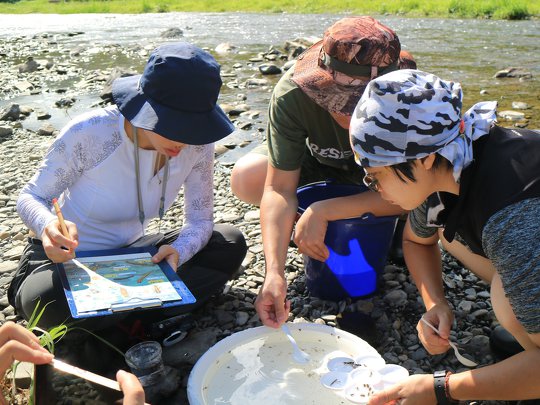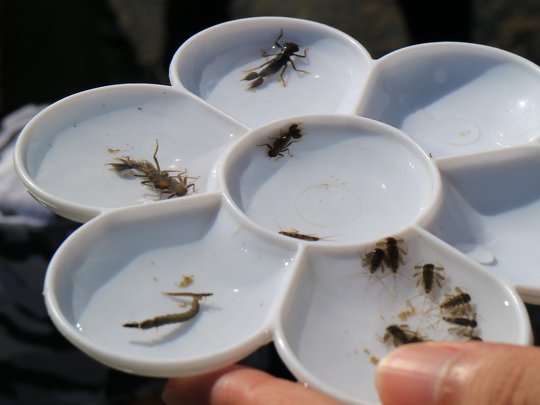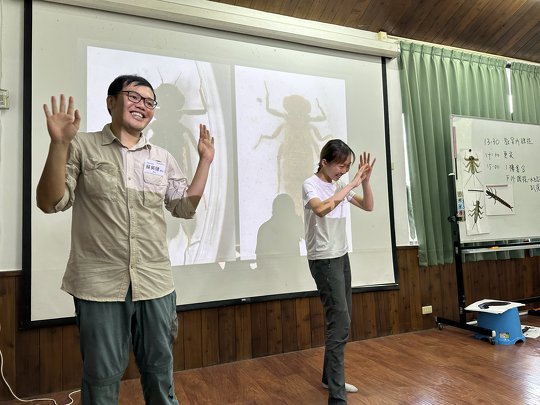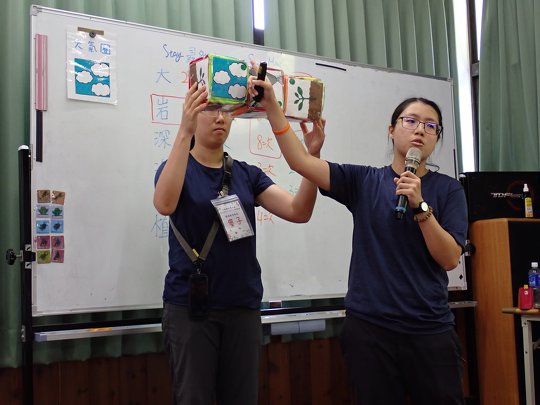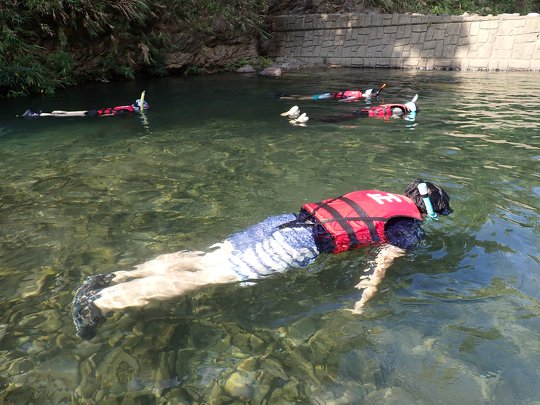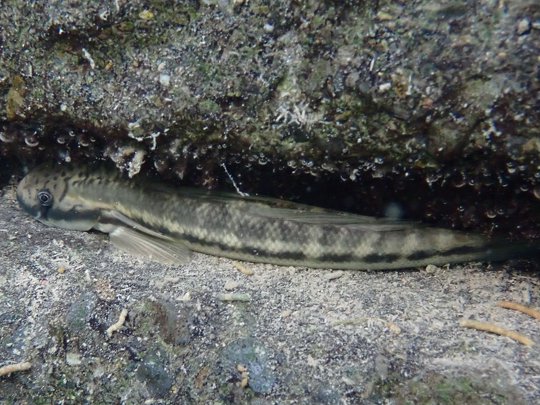Sharing by OWLHK team members
Dr. Ken So (Education and Research Manager)
Most parts of the Taiwan Shuangliu’s Fenggang River are relatively shallow, clean and cool, which is very suitable for environmental education activities. We were arranged to participate in a river exploration activity by Taiwan environmental education teachers. At that time, I was astonished by the overwhelming number of aquatic insects in Fenggang River. Every time I picked up a pebble, about 10 mayflies could be found crawling on the surface. What a rare scene in Hong Kong! It is not difficult to imagine that lots of Taiwanese citizens would be spellbound by this marvellous view every year!
Being one who has been long working in Hong Kong’s freshwater environments, this has induced me to ponder: Is Hong Kong rivers and streams really nothing to write home about? In an instant, I realized that the answer was obvious. Is there any valley like Hong Kong’s Sha Lo Tung that is home to over 80 types of dragonflies? Is there any rapid like one in Hong Kong’s Tai Po Kau where you could find 94 types of large invertebrates in just one day? Most importantly, you could gain access to different places in Hong Kong for fieldwork studies in less than an hour. For all these lovely species, indeed, it should be a credit to Hong Kong’s rivers and freshwater wetlands!
Maggie Mang (Senior Education Officer)
Have you ever imagined how carbon is travelling between different places on Earth? During the “Forest Explorer” lesson we experience in Shuangliu Nature Education Centre, we played the role of energetic and lovely “carbon babies”. Through the arrangement decided by the lucky dice (though it was later transformed into evil dice…), we travelled and stayed in levels of the atmosphere, rocks, deep sea and consumers. Instructors cleverly utilized the whole classroom, forcing us to leave our seats and roam around. Through our journey, we were able to experience and understand carbon transformation process, as well as to face the serious carbon emission impact caused by human activities (Please grant carbon babies the freedom of leaving the atmosphere!).
Time is always a valuable teaching resource. Should we choose between using PowerPoint slides to enhance students’ knowledge breadth, or an highly interactive activity to enhance their understanding of certain topics? Under Hong Kong’s traditional education model, utilizing one lesson to explain merely one concept is undoubtedly “luxurious”. After all, what should education prioritize? Quality or quantity? Which method is more effective in encouraging students’ thorough reflections, and even bringing changes to one’s environmental behavior? Through such a learning experience in Shuangliu, I am curious whether such “luxury” but highly effective environmental education could be implemented in Hong Kong’s schools. If you are willing to be our experiment companion, you are very welcome to take a look of our long-term education series. Let’s experiment with different possibilities, and dream big together!
Vito Tam (Project Officer)
After river exploration, we went snorkelling in the same river. Like to be a migratory fish, we swam upstream altogether. Despite being a bit physical-demanding, we are not alone. As one of the migratory fishes, Sicyopterus japonicus, also swam with us. Friends from Shuangliu had told us that apart from Sicyopterus japonicus, there were different migratory fishes here in the past. Regretfully, due to river constructions, these migratory fishes were unable to swim to the upstreams in Shuangliu. Same case as we saw in Hong Kong. Broad rivers in Shuangliu are ideal for people of different ages to engage in fieldwork studies for environmental education. Witnessing a variety of species in river snorkelling would give a deeper experience and induce profound feelings to general public. This makes me wonder whether similar activities could be organized in Hong Kong as well.
